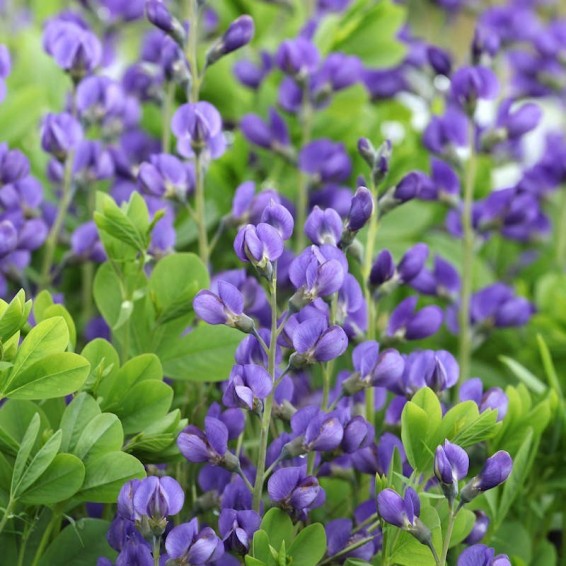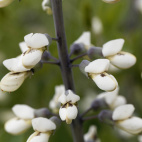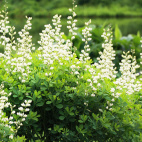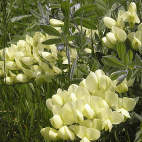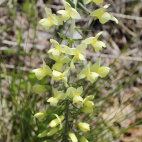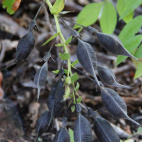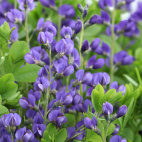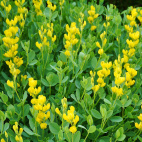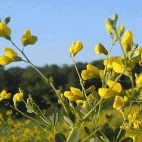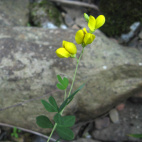Blue Wild Indigo Seeds
- HOW TO GROW
- FAST FACTS
- REVIEWS
HOW TO GROW
Sowing: Since this plant does not transplant well, it should be direct sown. The seed will need to be scarified; to accomplish this, pour 150 degrees F water over the seed and let it soak overnight the day before planting. In late fall, plant the blue wild indigo seeds 1/2" deep. For spring planting, the scarified seed will need to be mixed with moist sand and stored in the refrigerator for 10 days before planting. Germination should take place within 15-20 days.
Growing: This plant tolerates clay, gravel, and sand and can also thrive in poor soil. It tolerates drought well, but it also benefits from occasional watering. Though long-lived, the plants develop slowly and may not flower until their second or third season. The foliage may be pruned for neat growth after blooming, though this will prevent the development of the seed pods. The plant will go dormant over winter, and can be cut down to 6" after the foliage dies. Eventually, the plants will spread by rhizomes. White Wild Indigo is a host plant for the Indigo Dusky Wing and Zarucco Dusky Wing butterflies, though the foliage can be fatal to grazing animals.
Harvesting: The foliage and seed pods of this flower both dry well and make attractive additions to dried flower arrangements.
Seed Saving: When ripe, the seed pods will turn black; cut them off and spread them out to dry away from direct sunlight. Split the pods open to remove the Baptisia Australis seeds. Store blue wild indigo seeds in a cool, dry place.
FAST FACTS
Common Names: False Indigo
Latin Name: Baptisia australis
Species Origin: US Native Wildflower
Type: Native Wildflowers
Life Cycle: Perennial
USDA Zones: 4, 5, 6, 7, 8, 9
US Regions: Plains/Texas, Midwest, Northeast, Southeast
Seeds per Ounce: 1,800
Stratification: Cold/Wet for 1 Week
Germination Ease: Stratify 1 Week
Sunlight: Full Sun, Part Sun
Height: 40 Inches
Color: Blue
Bloom Season: Blooms Late Spring, Blooms Early Summer
Uses: Attracts Pollinators, Attracts Honeybees, Attracts Butterflies, Cut Flowers, Deer Resistant
Excellent Company
I have had excellent results with seeds from this company. Excellent packaging and especially like the germination instructions and information on the website. Excellent germination rate. Highly recommended.
Seeds
Great stuff!
Indigo
Very rapidly developing seeds. Shoots already! Product sent very quickly and with a practical price, too.
Nope
Did not germinate
Excellent seed. Very good germination.
DESCRIPTION
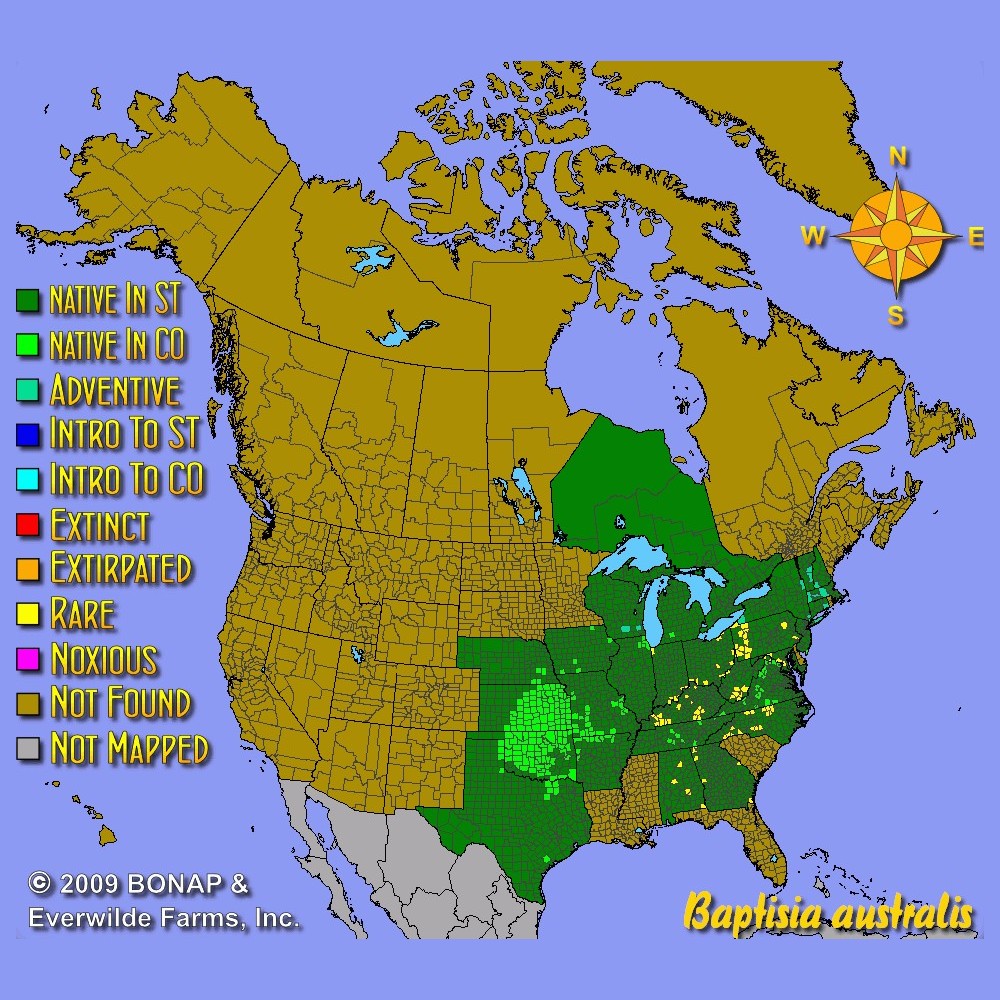
HOW TO GROW
Sowing: Since this plant does not transplant well, it should be direct sown. The seed will need to be scarified; to accomplish this, pour 150 degrees F water over the seed and let it soak overnight the day before planting. In late fall, plant the blue wild indigo seeds 1/2" deep. For spring planting, the scarified seed will need to be mixed with moist sand and stored in the refrigerator for 10 days before planting. Germination should take place within 15-20 days.
Growing: This plant tolerates clay, gravel, and sand and can also thrive in poor soil. It tolerates drought well, but it also benefits from occasional watering. Though long-lived, the plants develop slowly and may not flower until their second or third season. The foliage may be pruned for neat growth after blooming, though this will prevent the development of the seed pods. The plant will go dormant over winter, and can be cut down to 6" after the foliage dies. Eventually, the plants will spread by rhizomes. White Wild Indigo is a host plant for the Indigo Dusky Wing and Zarucco Dusky Wing butterflies, though the foliage can be fatal to grazing animals.
Harvesting: The foliage and seed pods of this flower both dry well and make attractive additions to dried flower arrangements.
Seed Saving: When ripe, the seed pods will turn black; cut them off and spread them out to dry away from direct sunlight. Split the pods open to remove the Baptisia Australis seeds. Store blue wild indigo seeds in a cool, dry place.
FAST FACTS
Common Names: False Indigo
Latin Name: Baptisia australis
Species Origin: US Native Wildflower
Type: Native Wildflowers
Life Cycle: Perennial
USDA Zones: 4, 5, 6, 7, 8, 9
US Regions: Plains/Texas, Midwest, Northeast, Southeast
Seeds per Ounce: 1,800
Stratification: Cold/Wet for 1 Week
Germination Ease: Stratify 1 Week
Sunlight: Full Sun, Part Sun
Height: 40 Inches
Color: Blue
Bloom Season: Blooms Late Spring, Blooms Early Summer
Uses: Attracts Pollinators, Attracts Honeybees, Attracts Butterflies, Cut Flowers, Deer Resistant
Reviews
Review
Excellent Company
I have had excellent results with seeds from this company. Excellent packaging and especially like the germination instructions and information on the website. Excellent germination rate. Highly recommended.
Review
Seeds
Great stuff!
Review
Indigo
Very rapidly developing seeds. Shoots already! Product sent very quickly and with a practical price, too.
Review
Nope
Did not germinate
Review
Excellent seed. Very good germination.
Also Consider These:
-
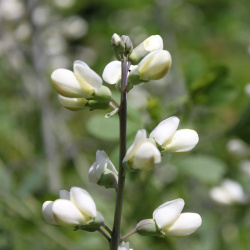 White Wild Indigo Seeds
Baptisia alba
Attractive foliage and vase-like shape add a refined touch to the native landscape. The lovely white blooms are very drought resistant and will bring pollinators to your garden.Quick View$3.75 Pkt - $18.26 / Oz
White Wild Indigo Seeds
Baptisia alba
Attractive foliage and vase-like shape add a refined touch to the native landscape. The lovely white blooms are very drought resistant and will bring pollinators to your garden.Quick View$3.75 Pkt - $18.26 / Oz -
 Cream Wild Indigo Seeds
Baptisia leucophaea
One of the first plants to bloom on the spring prairie, these abundant creamy flowers add elegance to any planting. These take a while to establish from seed but will persist for decades.Quick View$3.75 Pkt - $108.00 / Oz
Cream Wild Indigo Seeds
Baptisia leucophaea
One of the first plants to bloom on the spring prairie, these abundant creamy flowers add elegance to any planting. These take a while to establish from seed but will persist for decades.Quick View$3.75 Pkt - $108.00 / Oz -
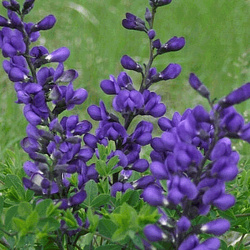 Dwarf Blue Indigo Seeds
Baptisia minor
Deep blue flowers provide a striking contrast to a native planting or garden. The shrub-like plants also have a very lovely green foliage.Quick View$3.48 Pkt - $22.17 / Oz
Dwarf Blue Indigo Seeds
Baptisia minor
Deep blue flowers provide a striking contrast to a native planting or garden. The shrub-like plants also have a very lovely green foliage.Quick View$3.48 Pkt - $22.17 / Oz -
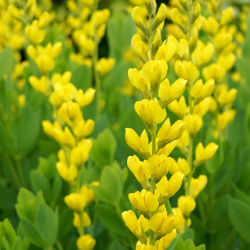 Out Of Stock
Large Yellow Wild Indigo Seeds
Baptisia sphaerocarpa
Bursting with bright yellow blossoms, this robust perennial grows larger each year. It is very long-lived and drought resistant.Quick View$3.48 Pkt - $50.00 / Oz
Out Of Stock
Large Yellow Wild Indigo Seeds
Baptisia sphaerocarpa
Bursting with bright yellow blossoms, this robust perennial grows larger each year. It is very long-lived and drought resistant.Quick View$3.48 Pkt - $50.00 / Oz -
 Small Yellow Wild Indigo Seeds
Baptisia tinctoria
These sunny, yellow flowers grow on drought-resistant, shrub-like plants. These long-lived perennials are perfect for native landscaping.Quick View$3.75 Pkt - $60.00 / Oz
Small Yellow Wild Indigo Seeds
Baptisia tinctoria
These sunny, yellow flowers grow on drought-resistant, shrub-like plants. These long-lived perennials are perfect for native landscaping.Quick View$3.75 Pkt - $60.00 / Oz






